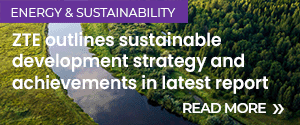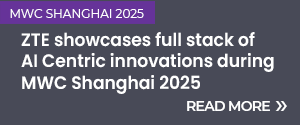As mobile networks expand and data demands explode, sustainability is becoming more than a buzzword, it’s a mandate. Telecom operators around the globe are under increasing pressure to reduce their carbon footprints, comply with climate regulations, and cut energy costs. But there’s a problem: many still don’t have a clear picture of what’s actually consuming power across their infrastructure.
From sprawling edge data centers to dense mobile site deployments, the complexity of modern telecom operations is both a strength and a sustainability liability. Without a centralized way to view and manage all physical and virtual assets, and their associated energy usage, it's nearly impossible to make meaningful progress toward net-zero goals.
A Growing Footprint: The Energy Toll of 5G and AI
The rollout of 5G and the rise of AI applications are major contributors to the sector’s growing energy footprint. 5G networks, with their need for massive MIMO antennas and densely deployed small cells, are expected to more than double their energy consumption between 2020 and 2030. Add to that the rapid proliferation of AI workloads and data-heavy applications, and it’s clear why electricity demand across Europe alone is expected to rise by 40–50% by 2033.
Edge data centers, which power real-time applications and low-latency services, are also putting additional strain on power grids. And while AI models deliver incredible value, training and deploying them requires substantial computational and electrical resources.
Regulatory Demands Add Pressure
Sustainability regulations are ramping up around the globe. From the EU’s ambitious “Fit for 55” targets to California’s Scope 1, 2, and 3 emissions disclosure rules for large businesses, operators must now measure and report environmental impacts with greater granularity than ever before. Accurate emissions tracking isn’t optional, it’s a regulatory requirement and a prerequisite for green financing.
The Documentation Gap
So why are progress and compliance still elusive? A major obstacle is data fragmentation. Telecom infrastructures are often spread across different vendors, facilities, and legacy systems. Equipment inventory may be managed by third parties, without consistent documentation or visibility into power, cooling, and lifecycle data. This makes calculating emissions, particularly indirect Scope 3 emissions, a daunting task.
Digital Twins and Integrated Asset Intelligence
To move the needle, telecoms need a centralized, digital representation of their entire asset landscape—what many refer to as a digital twin. Such a system consolidates data from IT, network, and data center infrastructures into a single, unified platform. This holistic view enables operators to monitor energy usage, track carbon output by asset, and identify stranded or underutilized equipment.
Beyond energy consumption, a comprehensive platform should track environmental product declarations (EPDs), including embodied CO₂, fresh water use, and mineral resource depletion across the full lifecycle of each asset, from manufacture and transport to installation and decommissioning.
Financial and Operational Benefits
This level of visibility doesn't just help companies meet emissions targets, it can significantly lower operational costs. When network operators understand exactly what equipment is drawing power and whether it’s contributing to business value, they can reduce waste, extend the life of infrastructure, and streamline troubleshooting.
There’s also a financial incentive. Investors increasingly weigh environmental, social, and governance (ESG) factors in their decisions. Transparent sustainability reporting can unlock funding, while poor documentation may shut doors.
Continuous Monitoring, Smarter Decisions
With integrated infrastructure management, emissions can be tracked in real time by location, device type, vendor, and organizational unit. Visual dashboards can reveal carbon hotspots, forecast the impact of data center expansions, and guide more sustainable planning decisions such as redistributing high-heat equipment to minimize cooling needs.
The Time for Action is Now
Telecom operators can no longer afford to operate in the dark when it comes to carbon emissions. As government mandates tighten and energy costs soar, sustainability must be embedded into the DNA of infrastructure operations.
The first step? Gaining full visibility into the assets powering today's connected world. Because what you can’t see, you can’t measure and what you can’t measure, you can’t change.
Daria Batrakova is Director, Business Line Telecom Solutions at FNT Software.



































